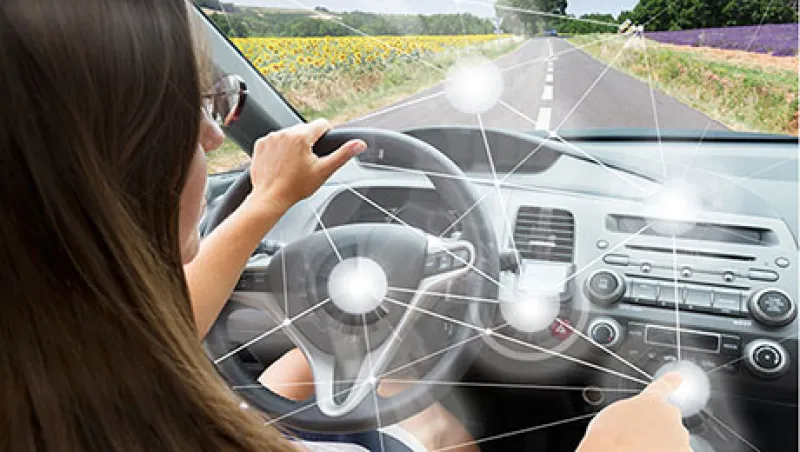This year saw remarkable progress in the new economies. Virtual reality moved from the fringe to the forefront with the much-anticipated release of Facebook’s Oculus Rift headset. Private space companies continued to thrive — shrugging off the SpaceX rocket disaster late in the summer — and committed to reach Mars in the next couple of decades. And the cleantech and clean energy industries are burgeoning again, according to data published in 2016.
All of the new economy industries advanced, but one stands out in my mind: autonomous vehicles.
In 2016 it became clear that self-driving vehicles are no longer just a tech nerd’s dream, as they were when the GM Firebird II, a so-called autonomous concept car, debuted in 1956. Taken together, several developments over the past year demonstrate that the technology is nearing a tipping point to commercial viability.
Many threw their weight behind autonomous vehicles in 2016. Several automakers, including Ford and BMW, made promises that they will develop road-ready self-driving cars in the next five years. Uber put autonomous vehicles on the road in Pittsburgh and San Francisco, and competitor Lyft said that a majority of rides in its network will be in fully self-driving cars by 2021.
President Barack Obama himself urged the federal government to spend almost $4 billion over ten years on developing regulation around autonomous cars. California and Michigan passed laws allowing trials of unmanned vehicles on their roads; these two states seem to be duking it out to become the industry’s epicenter. In December the U.S. Department of Transportation proposed a rule requiring all vehicles to communicate with each other by 2023, a change that in the short term would help prevent accidents but in the long term would help pave the way for autonomous vehicles. And in perhaps the most important indicator of the industry’s permanence, the federal government said that computers could qualify as drivers.
There were some setbacks when it comes to public perception of the technology. Google’s self-driving car, which hit 2 million miles on its odometer this year, caused its first crash. Tesla’s Autopilot may have been involved in two fatal car accidents in 2016, one in China and one in Florida. Also, people still seem wary of autonomous vehicles: A survey conducted by AAA found that three out of four American are afraid of unmanned cars. Still, the industry as a whole is trending upward. As of market close on December 16, the combination of companies expressed in the Kensho Autonomous Vehicles Index was up more than 15 percent year-to-date.
This brings us to what we might expect in 2017. As I see it, the critical technology-related challenge for autonomous-vehicle makers will be to find an obstacle detection system that combines affordability and accuracy. Google’s system consists of cameras, radar, and a laser-based light detection and ranging (LIDAR) unit — the LIDAR alone costs more than $80,000. Tesla, on the other hand, doesn’t use LIDAR but relies on camera- and radar-based hardware, so its entire system costs less than $10,000.
LIDAR is more accurate and will be for many years, but it’s not clear that its level of precision is necessary for self-driving cars. Tesla’s system could keep improving over time and has a bigger chance of being commercially viable. And because cameras are much cheaper, Tesla’s obstacle detection system allows for a greater degree of redundancy.
Of course, technologies that are difficult to mass produce aren’t the only obstacle these companies face. It remains to be seen which route will pay off: the riskier but longer-term bets placed by Tesla, which is keeping its car creation in-house, or the more conservative decisions by Google and others to partner with established carmakers.
From a technological standpoint, though, the one-company model seems to make more sense — it’s easier to make systemwide updates and push those developments to users without the overhead of cross-company coordination. So perhaps it does make sense to reinvent the wheel. At least that’s what tech players like Tesla and Apple, which revealed its plan for a self-driving car earlier this month, are betting on.
The question remains of when and how autonomous vehicles will be adopted on a mass scale. They’ve had some success clearing regulatory hurdles, but so far, state laws have allowed for self-driving cars only on a trial basis. Widespread adoption will likely require special infrastructure to accommodate autonomous vehicles; for example, intersection signals may have to be tweaked so they’re more visible to the cars’ cameras.
This year Mark Rosekind, head of the National Highway Traffic Safety Administration, stated that it will be decades before autonomous vehicles rule the roads. Although proponents may find that disappointing at first glance, it’s a significant milestone. The NHTSA chief was speaking in front of a House Energy and Commerce subcommittee, telling political officials that self-driving cars’ domination will be a reality someday. Clearly the technology is no longer just a dream seen on The Jetsons.






